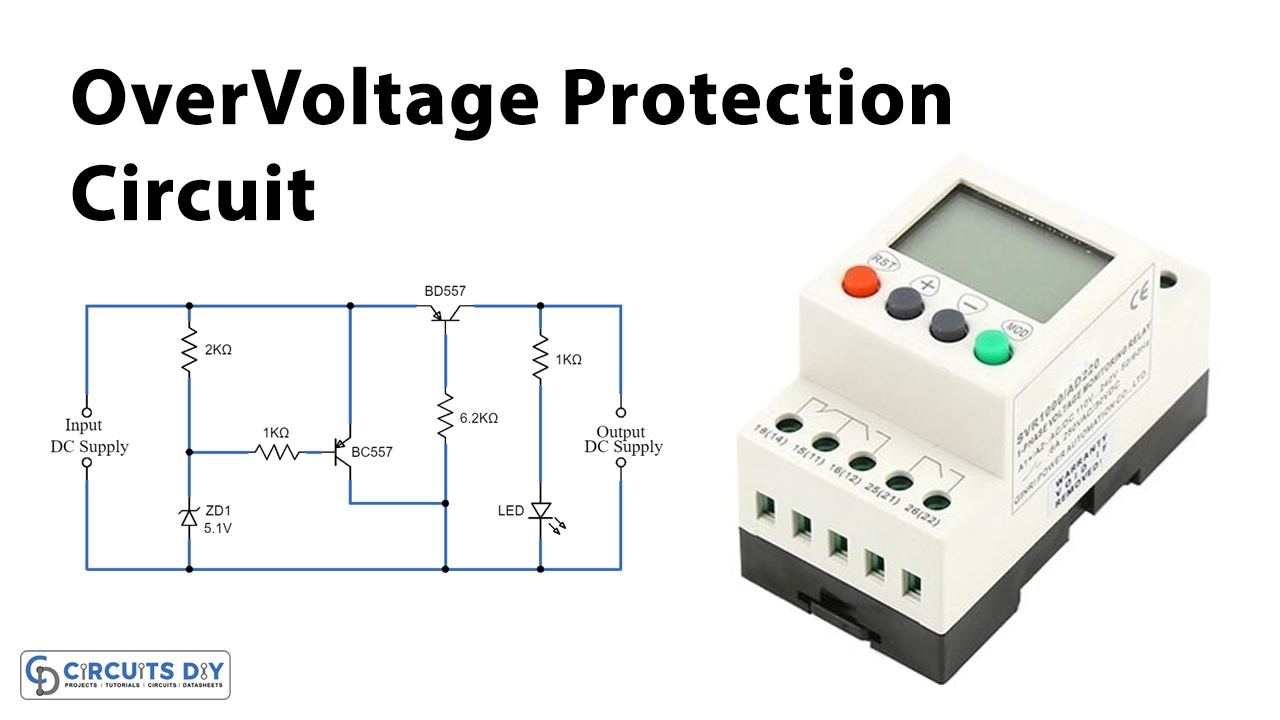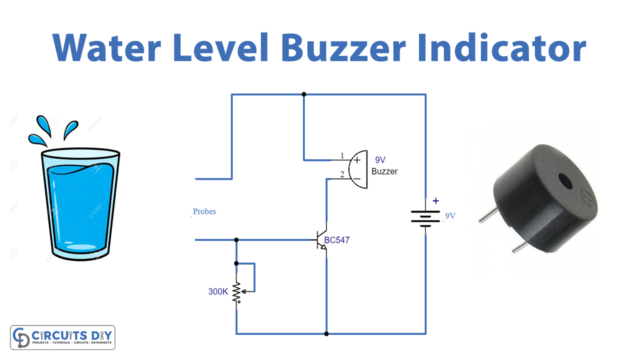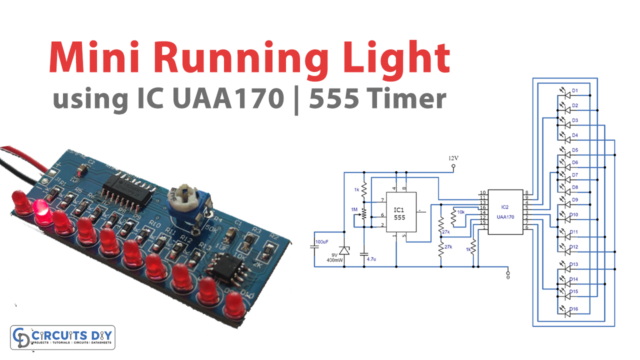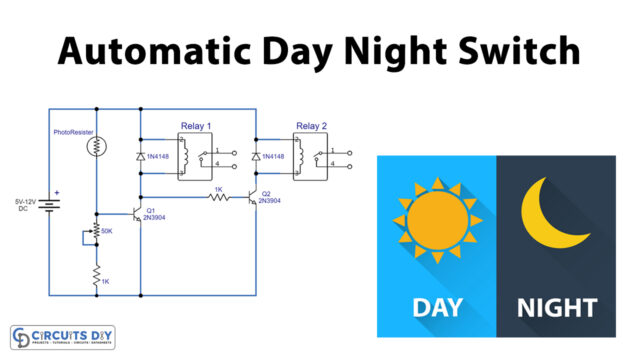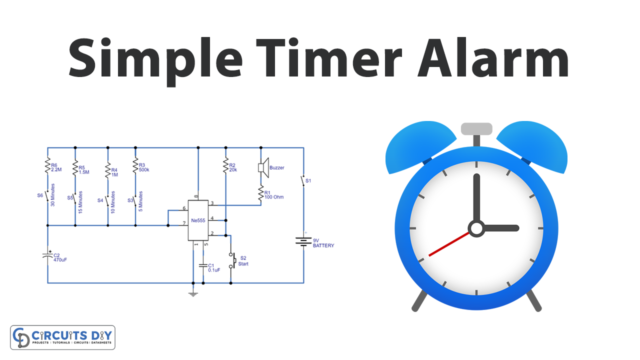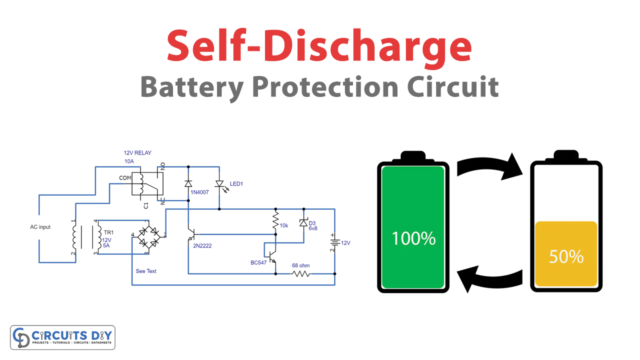Introduction:
The overvoltage is the voltage in the circuit that exceeds the design limit. By definition, the potential needed for an ion to discharge itself at an electrode over and above the balanced potential is known as overvoltage. Lighting or switching urges, or heavy load sudden interruptions might be the reasons for the overvoltage occurrence. It might damage the equipment, can cause fire, fails the transformer or machine, etc.
To avoid losses it is essential to protect the circuits effectively from overload occurrence, and it can be done using an overload protection circuit for the sensitive electrical equipment. The protection circuit is generally used in the main power supply, which shuts down the supply of voltage that exceeds the maximum bearing value of the electrical appliance or system. A simple overvoltage protection circuit is built using a Zener diode and transistors, the detailed explanation of the circuit is given below.
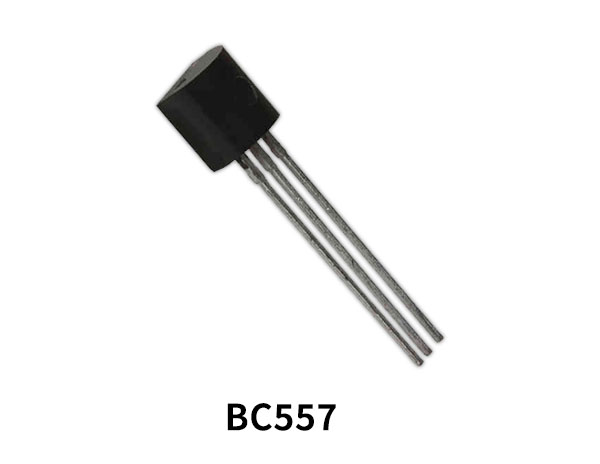
Hardware Components
The following components are required to make Overvoltage Protection Circuit
| S.no | Component | Value | Qty |
|---|---|---|---|
| 1. | Zener diode | 5.1V | 1 |
| 2. | Transistor | BC557 | 2 |
| 3. | LED | – | 1 |
| 4. | Resistor | 1KΩ, 2KΩ, 6.2KΩ | 1 each |
BC557 Pinout
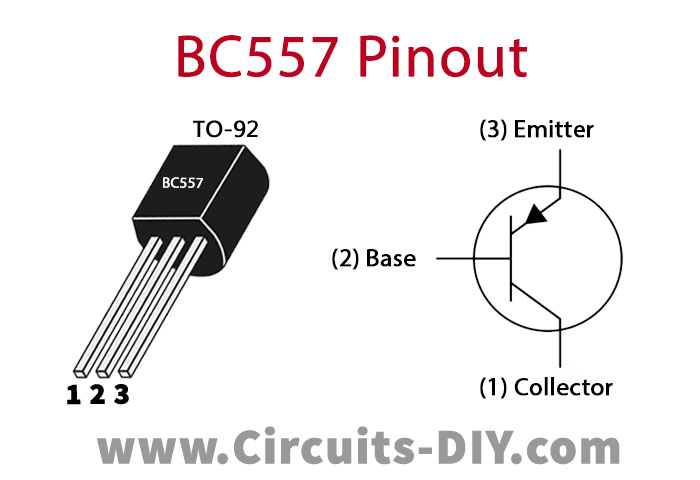
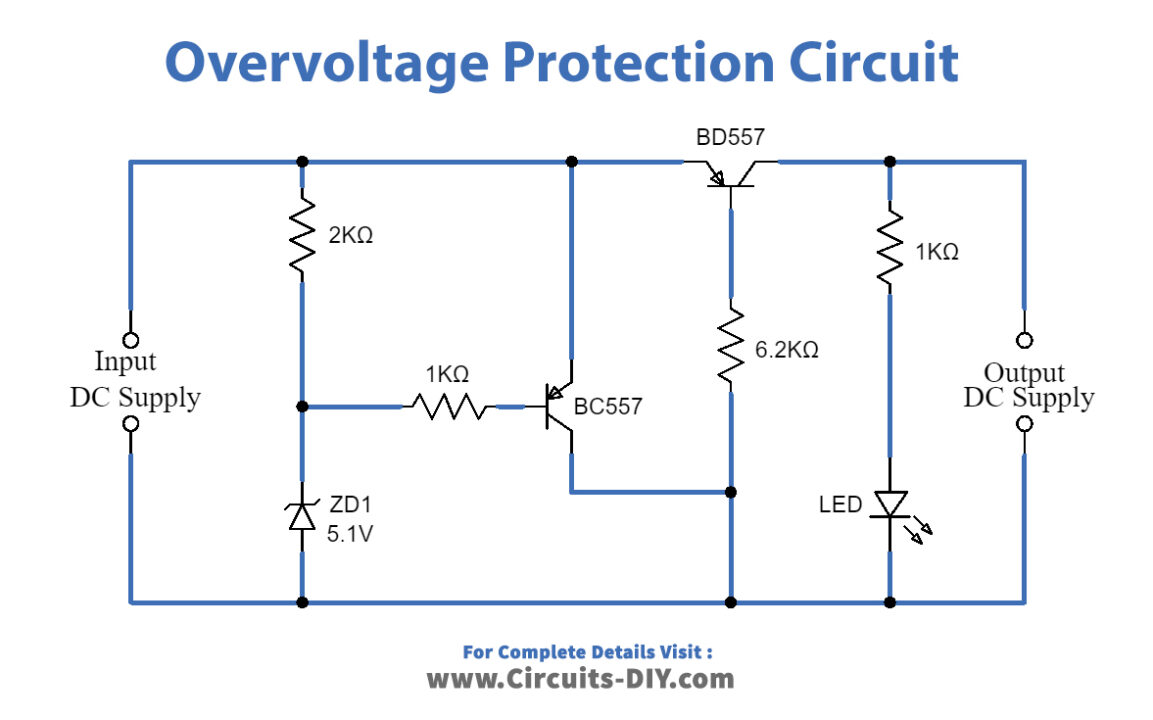
For a detailed description of pinout, dimension features, and specifications download the datasheet of BC557
Working Explanation:
The given circuit is simply designed using a Zener diode, transistors with a few resistors, and a LED. The Zener diode is used as a voltage regulator and a diode is selected based on the load (here for 5V load we have used 5.1V Zener). The transistors BC557 are used as a switch. When the DC input is supplied to the circuit, the diode which is reverse biased acts as a voltage regulator and provides regulated DC voltage at its output flows through transistor Q1 and transistor Q2 base terminal. If the voltage is under 5V, the transistor will be in the ON state and allow the voltage to flow to the load. In case the voltage exceeds the preset value which is 5V, the transistor will go into the OFF state and the load will be disconnected from the supply voltage.
This circuit will protect the device from overvoltage occurrence and prevent any damage. For better results, overvoltage protection ICs can be used.
Applications:
The overvoltage protection circuit is an essential part of many electrical appliances. Few are listed below:
- It can be used in substations to protect the transformers from high voltage surges.
- It is used in industrial and home appliances to control the variations in voltages.
- The circuit is beneficial for sensitive electrical equipment to prevent damage.
- It is used in pumps and motors for safety.
Advantages:
- The circuit is easy to build and cheap.
- It is reliable for many applications.
- Furthermore, it is highly sensitive and can handle heavy loads.


